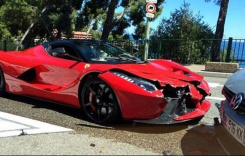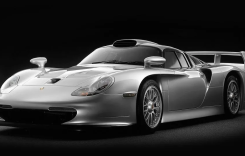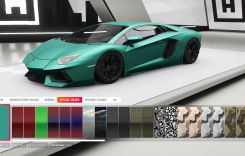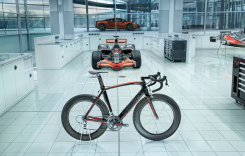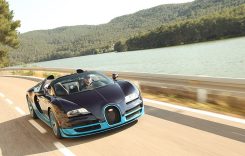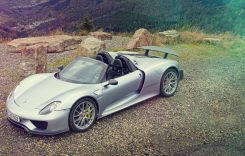The Touratech crew has a pretty good handle on the adventure world. Just look at the company’s catalog sometime, its 1924 pages packed with adventure goodies for nearly every motorcycle that could possibly be considered an adventure bike. Surprisingly, Touratech didn’t offer much for the popular Kawasaki KLR650, so it purchased a KLR and went to work.

Touratech brought its outfitted 2015 KLR650 for me to ride at the Touratech Adventure Rally. The KLR was decked out with almost every item they make, improving on one of the most versatile bikes in the world. The KLR650 hasn’t changed much since 1986, and neither has the price. Its $6599 MSRP is crazy cheap for a motorcycle, no matter the shape and size.
But if you want to turn your KLR650 into the Touratech version I rode, grab your wallet, your wife’s wallet and smash open your kid’s piggy bank too. It will set you back thousands of dollars. In fact, you can find a clean, low-mileage BMW F800GS for nearly the same amount. But KLR650 fans are different breed, with a strong devotion for their big, antiquated machine and the Touratech parts promise improved performance.
Dripping With Touratech
Touratech’s KLR upgrades start with the overly soft suspension, replacing the stock fork internals with the Hyperpro progressive spring kit (available through Touratech $199). The goal is to retain a plush ride over small hits but hold up better on the bigger hits and not dive under braking and cornering. The kit fits KLR650s from 2008 to present and comes with the springs and oil. It is recommended to have them installed by a professional.

The hits to your wallet start to increase when you purchase the Touratech Explore HP rear shock ($1095), which fits all KLR650s from 1987 to present. It is designed to take on all hits better and handle a fully-loaded KLR650, offering 50% more spring preload adjustment.
The Touratech KLR650 was equipped with a complete Zega Pro pannier system, specifically designed for the KLR650. The panniers are waterproof and will empty $1299 from your wallet. Pannier systems are subject to personal preference, and it seems everyone has their opinion of what is best.
Further Touratech additions include protectors for the exhaust header ($56.50) and side stand switch ($29.80). Wider serrated footpegs ($169.99) increase comfort and the headlight metal mesh protector ($99) adds a cool look. The skid plate/engine guard ($137.40) is another burly addition, made from 3mm thick aluminum and 2mm stainless steel plate. It offers rugged protection for those riders exploring in rocky areas, but it doesn’t break the bank at $137. The Continental TKC 80 tires also add to the off-road capabilities and, without a lot of power to the rear wheel, last a long time.
On The Roads
Amazingly, I’d never ridden a KLR650 before my time on the Touratech model. All of my adventure bike hours have been logged aboard BMW GS models and the KTM 990/1190s. I love big power, great suspension and modern bike technology. I’m also a big fan of ABS and traction control in some situations. The first few hours piloting the Touratech KLR650 were like time travel, back to the days of carburetors, short travel suspension, flexi chassis and spongy brakes.
If you own a KLR650 and love it, I’m not here to offend you, I’m simply stating fact. The KLR650 is old technology and thus handles like an old bike. That is not to say it isn’t a good bike, it just isn’t a modern high-tech piece of machinery. It is a reliable, easy-to-work-on motorcycle that will get you from point A to point B over almost any terrain.
Initially, I thought there was something wrong with the KLR as soon as I rolled out onto a dirt road. The front end wandered horribly and I pulled over to inspect the air pressure in the front tire, thinking it must be flat. Everything was as it should be… back in 1986. The KLR650 performance is just so far from a modern adventure bike that no matter what you bolt on and replace, the technology is dated.
That being said, dated technology doesn’t mean bad or ineffective technology. The KLR simply gets the job done and delivers a true, electronics-free riding experience that some riders with appreciate. The brakes aren’t very powerful and they sure don’t have ABS. As for traction control, the KLR650 doesn’t really need it, as there is isn’t enough of a hit from the engine to worry much about wheel spin.

Touratech didn’t touch the engine or exhaust on the KLR650, so the power delivery is still very soft, especially when compared to modern, fuel-injected adventure bikes. The soft power is great for new or inexperienced riders, but leaves a lot to be desired from more seasoned riders.
I found myself shifting between first and second in rocky two-track. First gear had the engine revving too high, breaking the rear wheel loose over wobbly rocks, but the KLR couldn’t pull second at slower speeds, requiring a lot of clutch work to feed smooth power and keep the engine at a low rpm. Since this bike doesn’t really feel great at highway speeds above 70 mph, I would gear it down so that first and second offered more torque at slower technical speeds and the gaps between gears is closer.
Even with a bunch of money dumped into the suspension the KLR finds the limits quickly and not at very high speeds. Even relatively small bumps can bottom out both the front and back, forcing the rider to really be aware of upcoming terrain and any sizable hit. Yes, it is better than a stock bike by far, but doesn’t magically transform the KLR650 into a bike that can hang with a BMW F800GS, 1200GS or KTM 1190. But the KLR650 is still comfortable just cruising along, slowing down for any sizable bump, rock or rain rut.
The KLR650 is a great choice for riders new to adventure riding. It can cruise down dirt roads, carve up some two-track and even navigate some more technical single-track style trails as the rider’s skill increases. With an experienced rider at the controls, the KLR650 can go all the places BMW and KTMs go, just at a slower pace and with less confidence. I can say this because for three days and hundreds of miles I rode the KLR back-to-back with a BMW F800GS and KTM 1190R, switching frequently between the bikes on the same trails and roads. The KLR650 requires a lot more work and skill to conquer trails at half the speed of the BMW and KTM, even with all the Touratech modifications.
Bottom Line
A KLR650 has a lot to offer in the adventure world and you’d be hard pressed to get a more versatile bike for the price. It is a great choice for beginning adventure riders or those not looking for the latest in performance required for aggressive riding. This isn’t a bike that begs to hammer down a dirt road or soak up huge hits, it’s at home cruising down a dirt or two-track road. The Touratech bike, along with previous MotoUSA KLR650 projects, improve the stock workhorse KLR. But when the time comes to step up the level of riding, it might be best to skip the expensive modifications and sell the KLR650 for a more modern adventure bike.

